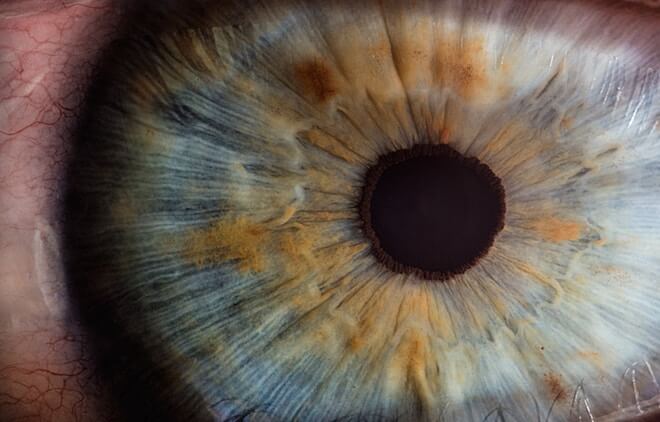Updated 3/20/24
Everyone feels sadness from time to time. You can feel sad for many reasons, like receiving bad news, fighting with a friend or significant other, or just having a stressful day at work. Although sadness is a normal and common (and believe it or not, healthy) emotion, it’s not something you should constantly feel.
Persistent sadness can be overwhelming, especially when you don’t know why you’re unhappy. You might be wondering why you always feel sad or are sad for no reason. Most often, sadness is temporary, so if you’re feeling sad all the time, it could be a cause for concern. Keep reading to learn more about why you might be feeling sad all the time.
“There are usually reasons we feel sad, but these are sometimes conscious reasons like changes in the season or feeling overwhelmed from work, family schedules, or finances. Sometimes when we’re feeling stressed or overwhelmed but we don’t address it, it can feel like sadness.”
– Talkspace therapist Reshawna Chapple, PHD, LCSW
Symptoms of Sadness
Much like happiness, sadness is a vast spectrum. It can range from a sad feeling of mild disappointment to deep grief and unhappiness. People react to these feelings in many ways, and sadness can trigger both emotional and physical symptoms.
Emotional symptoms
- Low mood
- Feeling discouraged or disappointed
- Intense emotional reactions to upsetting events
- Feeling hopeless or unmotivated
Physical symptoms
- Loss of appetite
- Overeating
- Feeling tired or drained
- Crying
4 Potential Causes of Sadness without Reason
Wondering why you always feel so sad? Persistent sadness often stems from everyday stressors such as workplace pressures, relationship conflicts, financial worries, and significant life transitions. These factors can create a cumulative emotional burden, leading to a continual sense of sadness and emotional turmoil.
“The changes in the seasons, feeling stressed or overwhelmed, feeling jealous or left out, being tired or hungry…any type of emotional change can come across as sadness.”
– Talkspace therapist Reshawna Chapple, PHD, LCSW
However, when sadness becomes a constant feeling without a clear cause, it’s crucial to look beyond these immediate triggers. Persistent sadness can be a sign that deeper, less obvious factors are at play, influencing your negative mood. The following may explain why you feel sad for no reason.
Hormonal changes
Hormones coordinate many functions in the body and can significantly impact our mood. Even minor shifts in hormone levels can affect your emotional state. For example, adolescents often experience intense mood swings during puberty, and reproductive hormones like testosterone and estrogen continue to influence emotions as we get older.
During menstruation, estrogen and progesterone levels increase. These hormonal shifts can change serotonin levels in the brain. Pay attention if you’re wondering: why am I so sad? your hormones may be a factor in your persistent sadness.
Seasonal affective disorder
If you feel sad at specific times of the year, you might have a condition known as seasonal affective disorder (SAD). SAD is a mental health condition that’s triggered by changing seasons. SAD symptoms usually begin in the fall and continue through the winter, which is why it’s sometimes referred to as winter depression.
While we don’t fully understand the condition, experts believe that SAD is caused by changing levels of sunlight. When we spend time in the sun, our bodies produce serotonin. As sunlight exposure decreases, our serotonin levels can drop, which can lead to feelings of extreme sadness or seasonal depression.
Chronic stress
Sometimes, if you’re asking why you feel sad for no reason, it might be because you weren’t expecting certain events to trigger emotions like sadness. We all respond to stress in different ways. Chronic stress can make some people feel nervous, irritable, or angry and leave others sad.
In fact, sadness is frequently triggered by chronic stress. Just like sadness, though, stress is a normal part of life. That said, it can be harmful to your emotional state if you don’t have healthy tools or treatment options to cope with it.
Depression
If your sadness never seems to go away, you might actually be depressed. Depression is one of the most common mental health conditions that can leave you with a low mood or persistent sadness.
It’s important to remember that there are different types of depression, and not everyone experiences it similarly. Severe depression can cause significant impairment, but mild depression doesn’t always interfere with daily life and functioning. If you suspect your sadness may be something more, like depression, you should talk to a mental health professional to check for a depression diagnosis.
Knowing When It’s Time to Get Help
Sad feelings aren’t necessarily a cause for concern. On the contrary, sadness is a normal and healthy reaction to painful or traumatic events. Studies even show that feeling sad can make us more sensitive to other people’s feelings.
However, if you’re constantly unhappy, you may want to talk to a mental health professional. It’s OK to be sad, but if your negative feelings interfere with your day-to-day life, they might signify a deeper problem that could be better addressed by starting therapy. Through therapy, you can learn how to deal with sadness before it becomes a medical condition.
For additional strategies on navigating these symptoms, consider also reading our guide on how to deal with depression.
Identifying sadness vs depression
Feeling blue doesn’t automatically mean you’re depressed, but sadness can be a symptom of depression. Usually, sadness is a response to something hurtful, discouraging, or upsetting. While it can feel overwhelming, it’s a normal emotion, and these negative feelings usually fade over time.
“It’s OK to feel sad on occasion. Allow yourself to rest and process potential reasons for your sadness. The main difference, though, between sadness and depression is often linked to the need to seek out professional care.”
– Talkspace therapist Reshawna Chapple, PHD, LCSW
Unlike sadness, depression isn’t an emotion. It’s a mental health condition that can influence how you feel, think, and behave. While a challenging event or experience can trigger depression, it’s also common to exhibit depressive symptoms without an obvious reason. Many people with depression feel gloomy or unhappy but don’t understand why.
How can you tell the difference between sadness and depression? Sadness is only one symptom of depression.
“You may want to ask yourself if you are: hungry, angry/anxious, lonely, or tired (HALT). Using HALT can help potentially eliminate biological causes of sadness. However, if these feelings of sadness don’t dissipate, they continue longer than a week, they persistently come back with little or no breaks in between, or you find them to affect your normal activities of daily living, this is a clear indication that you should seek the help of a professional or at the very least speak to someone about your feelings.”
– Talkspace therapist Reshawna Chapple, PHD, LCSW
If you have depression, your sadness will typically occur alongside other symptoms of depression, such as:
- Anger or irritability
- Loss of interest in activities you usually enjoy
- Thinking, speaking, or moving more slowly than usually
- Insomnia or excessive sleep
- Difficulty with memory or focusing on tasks
- Fatigue
- Feelings of guilt or worthlessness
- Digestive issues
- Aches and pains
- Restlessness
- Suicidal thoughts
Get Professional Help for Sadness & Depression with Talkspace
If you’re constantly unhappy or feel sad for no reason, you may be dealing with some type of depression or another mental health condition. Talking to a professional can help you understand your feelings.
Sadness can be challenging to cope with, especially when it doesn’t go away. Talkspace’s online therapy platform can connect you with a therapist so you can address your sadness or depressive symptoms. Whether you have clinical depression or are experiencing sad feelings for other reasons, Talkspace can help.
Sources:
- Green KH, van de Groep S, Sweijen SW, et al. Mood and emotional reactivity of adolescents during the COVID-19 pandemic: Short-term and long-term effects and the impact of social and socioeconomic stressors. Scientific Reports. 2021;11(1). doi:10.1038/s41598-021-90851-x. https://www.ncbi.nlm.nih.gov/pmc/articles/PMC8172919/. Accessed November 16, 2022.
- Warren DE, Tedford WH, Flynn WE. Behavioral effects of cyclic changes in serotonin during the human menstrual cycle. Medical Hypotheses. 1979;5(3):359-364. doi:10.1016/0306-9877(79)90017-3. https://pubmed.ncbi.nlm.nih.gov/459989/. Accessed November 16, 2022.
- Lam RW, Levitan RD. Pathophysiology of seasonal affective disorder: a review. J Psychiatry Neurosci. 2000;25(5):469-480. https://www.ncbi.nlm.nih.gov/pmc/articles/PMC1408021/. Accessed November 16, 2022.
- Kawakami A, Katahira K. Influence of trait empathy on the emotion evoked by sad music and on the preference for it. Frontiers in Psychology. 2015;6. doi:10.3389/fpsyg.2015.01541. https://www.ncbi.nlm.nih.gov/pmc/articles/PMC4621277/. Accessed November 16, 2022.
- Muscatell KA, Slavich GM, Monroe SM, Gotlib IH. Stressful life events, chronic difficulties, and the symptoms of clinical depression. Journal of Nervous & Mental Disease. 2009;197(3):154-160. doi:10.1097/nmd.0b013e318199f77b. https://www.ncbi.nlm.nih.gov/pmc/articles/PMC2840389/. Accessed November 16, 2022.
Talkspace articles are written by experienced mental health-wellness contributors; they are grounded in scientific research and evidence-based practices. Articles are extensively reviewed by our team of clinical experts (therapists and psychiatrists of various specialties) to ensure content is accurate and on par with current industry standards.
Our goal at Talkspace is to provide the most up-to-date, valuable, and objective information on mental health-related topics in order to help readers make informed decisions.
Articles contain trusted third-party sources that are either directly linked to in the text or listed at the bottom to take readers directly to the source.





